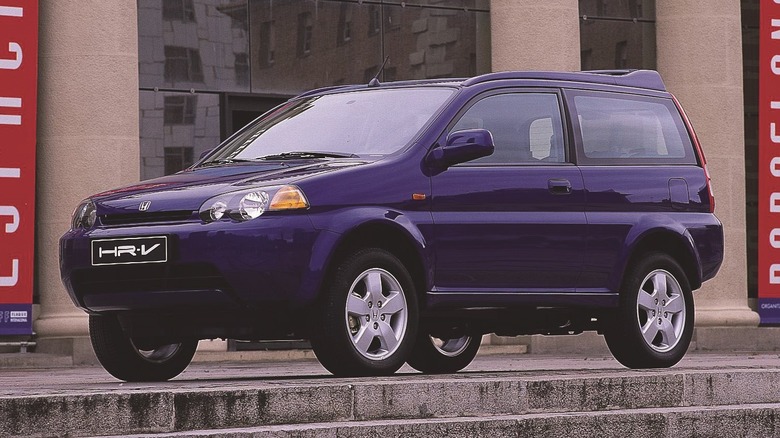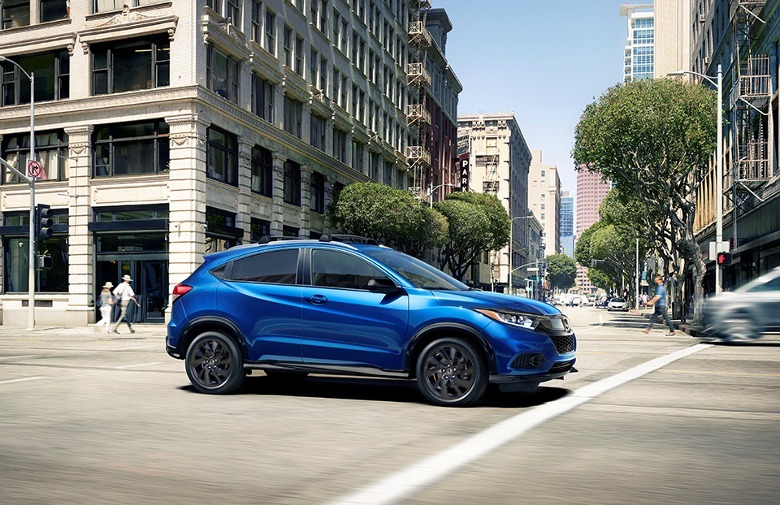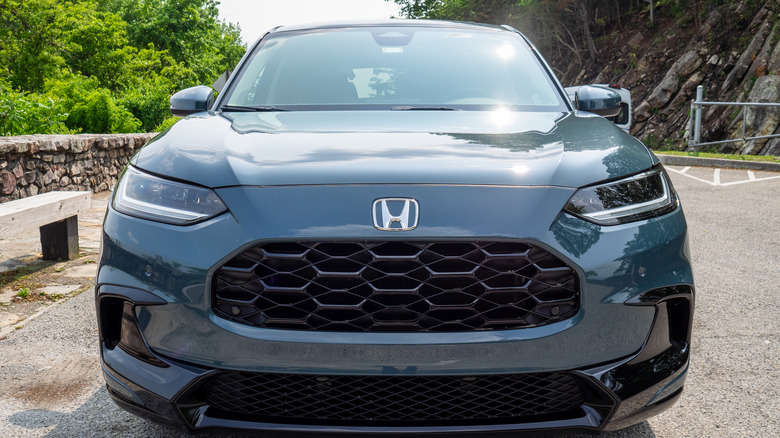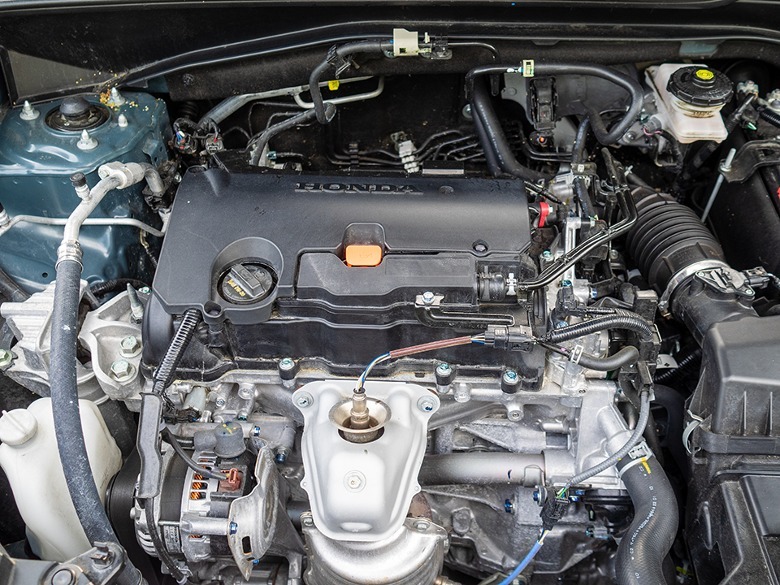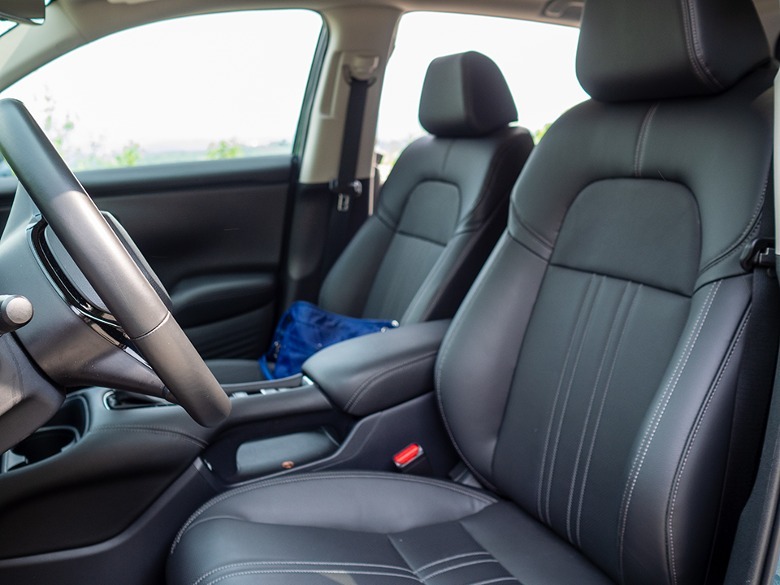2023 Honda HR-V Review: Gateway SUV Is Appealingly Inexpensive
- Roomier than the previous HR-V thanks to its Civic bones
- More powerful motor than before
- Honeycomb dash trim not a bad look
- Well-equipped despite entry-level pricing
- Exterior design may not be for everyone
- CVT noise is hardly appealing
It's been about a year since I made the trek to Stevenson, Washington to experience the newest Honda to join the family, the third-generation HR-V (the second-gen for the U.S. market, though). Now as big as the waters of the cresting Columbia River nearby, the subcompact crossover looked ready to take up where the previous-generation HR-V left off, with more room and utility than ever before. Unchanged is the HR-V's main mission: to serve as the gateway into the rest of the Honda and Acura lineups, by attracting first-time new-car buyers into the Red Wing Fold.
That's only a few hours over the course of one day with the all-new 2023 HR-V, though. What's it really like away from the big media gathering — with engineers and PR reps everywhere you look — especially as the 2023 model year folds into the 2024 model year? To find out, I spent a full week with the next-gen Honda subcompact crossover in set of mountains I'm much more familiar with: those of my Old Dominion home, located in the Ridge & Valley physiographic province of the Appalachians.
Starting small, dreaming big
Americans may be surprised to learn that the all-new Honda HR-V is the third-generation of Honda's entry-level subcompact crossover. The first HR-V was based on the same platform as the supermini hatchback Logo and mini MPV Capa, but only existed in Japan, Europe, and a few markets in the Asia-Pacific region from 1996 through 2006, before briefly fading into the winds of history.
The North American market's time with the nameplate began with the second-generation HR-V, which made its global preview at the 2013 Detroit Auto Show as the Urban SUV Concept. Concept beget pre-production car, at the 2014 New York Auto Show, and that morphed into ready-for-primetime guise at the 2014 Los Angeles Auto Show, before landing in Honda showrooms in 2015 as a model year 2016 vehicle. This HR-V generation rode on Honda's Global Compact Series platform, which also underpinned the third-generation Fit/Jazz and sixth-generation City.
Taking its place under the compact CR-V, the second-generation HR-V did well in its brief time in the North American market. By the end of the 2022 model year, nearly 700,000 examples had rolled out of Honda showrooms in the United States alone, many of them purchased by first-time vehicle buyers under 25 years of age and who came from a multi-cultural background. Honda positioned the HR-V then in much the same way it's positioning the new one now: to bring in new, lifelong Honda fans by bridging the gap between the automaker's sporty and rugged offerings with a model that exemplifies both in one fun package.
Big power for a bigger, youth-oriented subcompact crossover
Oddly, though, the North American and Chinese market versions of the third-generation Honda HR-V only share the name with the HR-V that the rest of the world gets. Unlike the latter — built on the fourth-generation Fit/Jazz — this HR-V is based on the bones of the 11th-generation Civic, thus placing the subcompact somewhere between the global HR-V and the CR-V. When it was introduced to consumers in Japan, Europe and the Middle East later on, it swapped its badge for the name ZR-V, or Z Runabout Vehicle. Per Honda, the "Z" is for Generation Z, the oldest of whom are now shopping for their first new vehicles, and the very consumers Honda has in mind.
For the North American market HR-V, the sole engine choice for all three trims — LX, Sport and EX-L — is the model-/market-exclusive K20Z5 2.0-liter inline-four, replacing the previous generation's 1.8-liter R18Z9 inline-four. The bigger engine delivers more power, too, pumping up the figures from 141 horses and 127 lb.-ft. of torque, to 158 horses and 138 lb.-ft. of torque. Its new gains go through a CVT designed to mimic the gear shifts of an automatic, ultimately finding the road through either the front pair or both sets of 17-inch alloys, which come in either standard machined-finish with gloss black inserts or the optional Honda Performance Development (HPD) bronze-finish alloys.
An angry face hides a comfy place
Unlike the boxy lines of the original HR-V, or the flowing swoops of the previous generation, the all-new HR-V is mostly a rounded ride, though its face is unusually aggressive for what this vehicle is. There's even a bit of fourth-generation Ford Escape to the fascia, I'd say. While its appearance is in line with the more sporty offerings Honda has — including the aforementioned 11th-generation Civic — it also splits the difference in styling with the rest of the crossover/SUV lineup. Still, the front end could be friendlier, not to mention line up better with Honda's other utility vehicles.
Despite the fierce exterior, the interior is a friendlier place to be. Those Civic bones allow the 2023 HR-V to provide plenty of room for four adults with the middle seat in the 60/40 rear bench unoccupied, plus a lot of leg and knee room to boot. Adding a fifth adult makes for a cozier experience on the same bench, but not as cramped as it was in the last HR-V.
The seating can be had in materials ranging from cloth in the LX, to black leather as seen above in the EX-L. Cargo room is nice, too, with 24.4 cu. ft. to fill with the rear bench up. With the bench fully down, the space opens up to 55.1 cu. ft. for those big IKEA runs, not to mention giving other subcompact crossovers like the Hyundai Kona, Chevrolet Trailblazer, and Toyota Corolla Cross a run for their money.
Bringing humanity back to the interface
Something Honda has been emphasizing about most of its recent new models, including the 2023 HR-V, is its extensive use of physical controls. In a day where you can find yourself in front of a massive set of screens covered in a single flowing pane of Gorilla Glass — with no buttons or knobs in sight — the decision to step back and bring tactile controls back to the dashboard is a welcome sight, not to mention a practical one in muscle-memory terms. Both multimedia and HVAC rely on knobs, dials, and buttons, large and readily laid-out. The honeycomb trim along the dash, behind which the ventilation grilles are hidden, is another a nice touch, bringing the HR-V's own honeycomb grille to the interior.
The infotainment system accessed via the 7-inch (LX and Sport) or 9-inch (EX-L) touchscreen is all new, too, and includes wireless Apple CarPlay and Android Auto support so you won't need to plug in your iPhone or Pixel. Taking the wireless thing further, the EX-L also gets a Qi-compatible wireless charging pad. Just make sure your phone is positioned correctly, if you don't want it to inadvertently stop charging while you drive.
A dreamy ride despite the CVT drone
One of Honda's main draws is translating its successes in motorsport to the showroom floor. For the all-new HR-V, this comes in the form of a new multi-link independent suspension out back, complemented by a new MacPherson strut system up front, along with a lightweight aluminum subframe designed for increased rigidity and stability on the winding roads. Luckily, I live along and near such roads, such as the ascent to and descent from Draper Valley Overlook in Pulaski County. Just like the 2021 Ridgeline I reviewed before, the 2023 HR-V drove like a dream through those curves.
On the open highway, those 158 horses came in handy more than a few times, as did the adaptive cruise control, an increasingly favorite feature of mine for any vehicle. Of course, like most CVTs, the one moving the power around here hummed away down I-81 towards my exit to the overlook. That hum wasn't as noticeable on the street, happily, and instead it was the fuel economy that kept my attention. Though it's EPA rated at a combined 27 mpg (25 mpg city, 30 mpg highway), I managed a final tally of 24.8 mpg in my own, mixed driving.
2023 Honda HR-V Verdict
The 2023 Honda HR-V may have angry face, but it appears to be an otherwise-chill, youth-oriented subcompact crossover. It's a vibe that seems more than a few members of the automaker's targeted demographic find appealing, too. According to Honda, the new HR-V continues to clean up when it comes to first-time new-vehicle buyers, especially Millennials and the older end of Generation Z, and it's the No. 1 SUV among Hispanic buyers.
It helps that the gateway of Honda dreams starts at a base MSRP of $24,100 for the LX trim; the EX-L starts at $28,950, or $30,950 as tested. With fewer new low-cost vehicles available on the dealer lot today — per Kelley Blue Book, the current average transaction price is just north of $48k — the 2023 HR-V is among the champions for those looking for that first brand-new ride. Whether that translates into loyalty is, of course, dependent on the experience. It's safe to say, though, that the new-gen subcompact crossover will have no trouble continuing its mission, one established by its predecessor in the mid-2010s.

